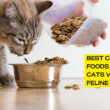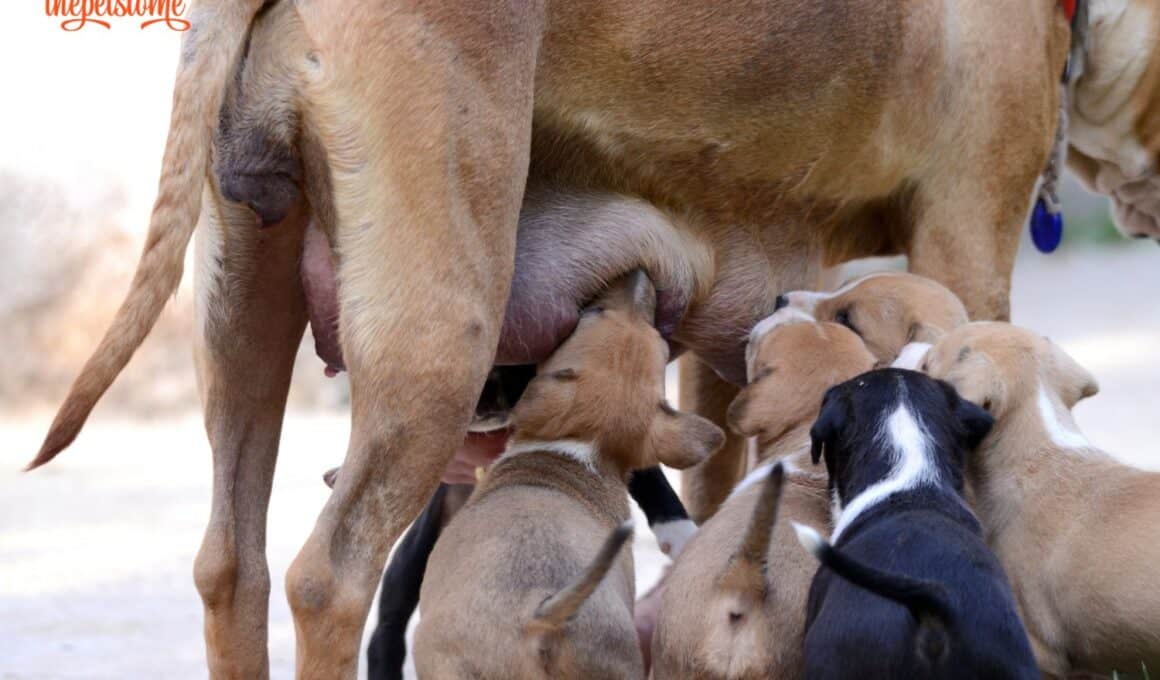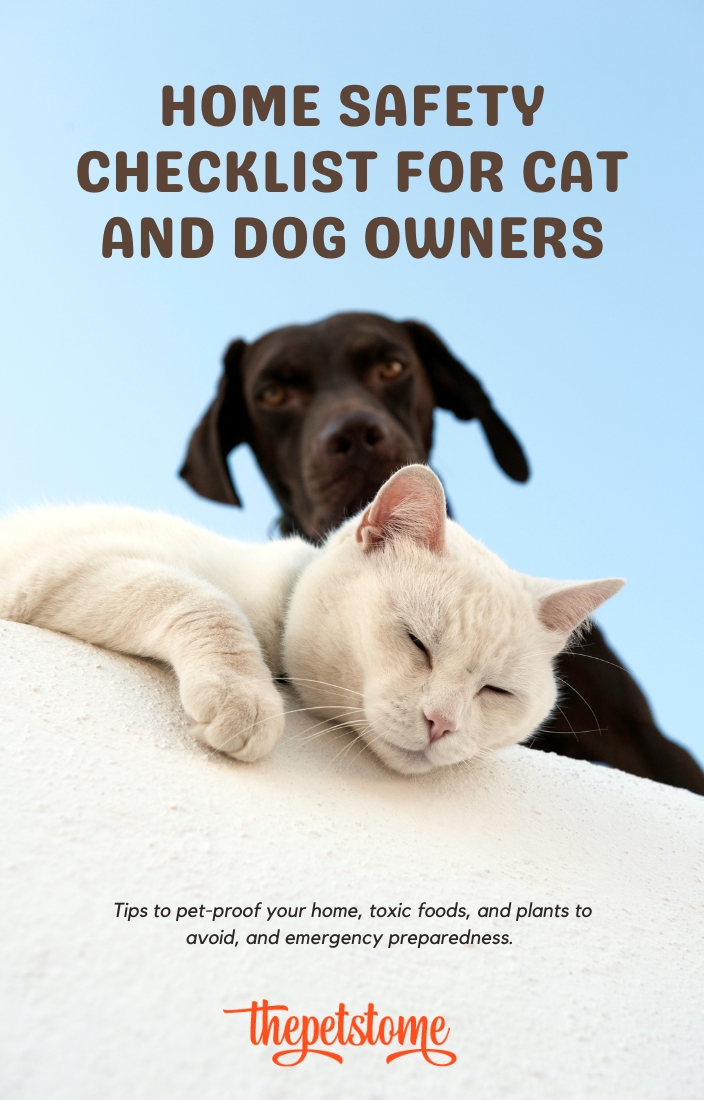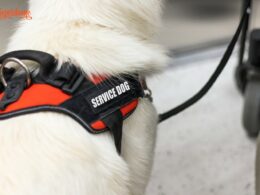Table of Contents Show
Epsom salts have long been a favorite amongst new mothers (human ones!) for helping to relieve clogged milk ducts; feelings of breast engorgement and that unpleasant “fullness”; and helping to dry up breast milk.
Whilst there is an absence of definitive scientific research into this field, common sense suggests that Epsom salts may therefore be useful for similar purposes in our canine family members.
And, since bathing in unscented Epsom salts is safe for the vast majority of female dogs coming to the end of their lactation period, there is little to be lost by giving it a try. In this article, you will find out all that you need to know about Epsom salt and canine lactation.
Normal Process And Timeframes Of Canine Lactation
As a norm, female dogs lactate (produce milk) for around 7-8 weeks following whelping (birth of a litter of puppies), with mild production peaking at around 3-4 weeks after the pups are born. From 7-8 weeks onwards, milk production tends to fall rapidly and dramatically, eventually drying up completely.
The amount of milk produced will vary between breeds, with larger dogs able to produce a greater volume and therefore support a larger number of puppies. For example, a lactating female German shepherd can produce 1.65 liters of milk daily at peak production!
During lactation, a female dog has significantly increased nutritional requirements, and the easiest way to meet these is to offer ad-lib feeding (that is, as much as she wants) of a highly-digestible, nutrient-dense diet such as puppy food for the first 3-4 weeks following whelping.
Of course, fresh drinking water should also always be easily available; after all, your dog’s milk is made up of around 77% water!
From around 4-5 weeks of age, Mom’s milk alone is no longer sufficient to support the puppies’ rapid growth and development, so they should be consuming a reasonable amount of semi-solid food in addition to milk feeds by this age.
In fact, you should introduce semi-solid (gruel-like) food to the pups from around 3 weeks old. This can be made up of 1 part dry food mixed with two parts warm water and then left to soak, for example.
Introducing dry food from 3 weeks takes some of the pressure off your female dog, allowing her a headstart in the drying-up process and ensuring all of her puppies’ nutritional needs are adequately met. The puppies should be completely weaned by 6-8 weeks of age, in most instances.
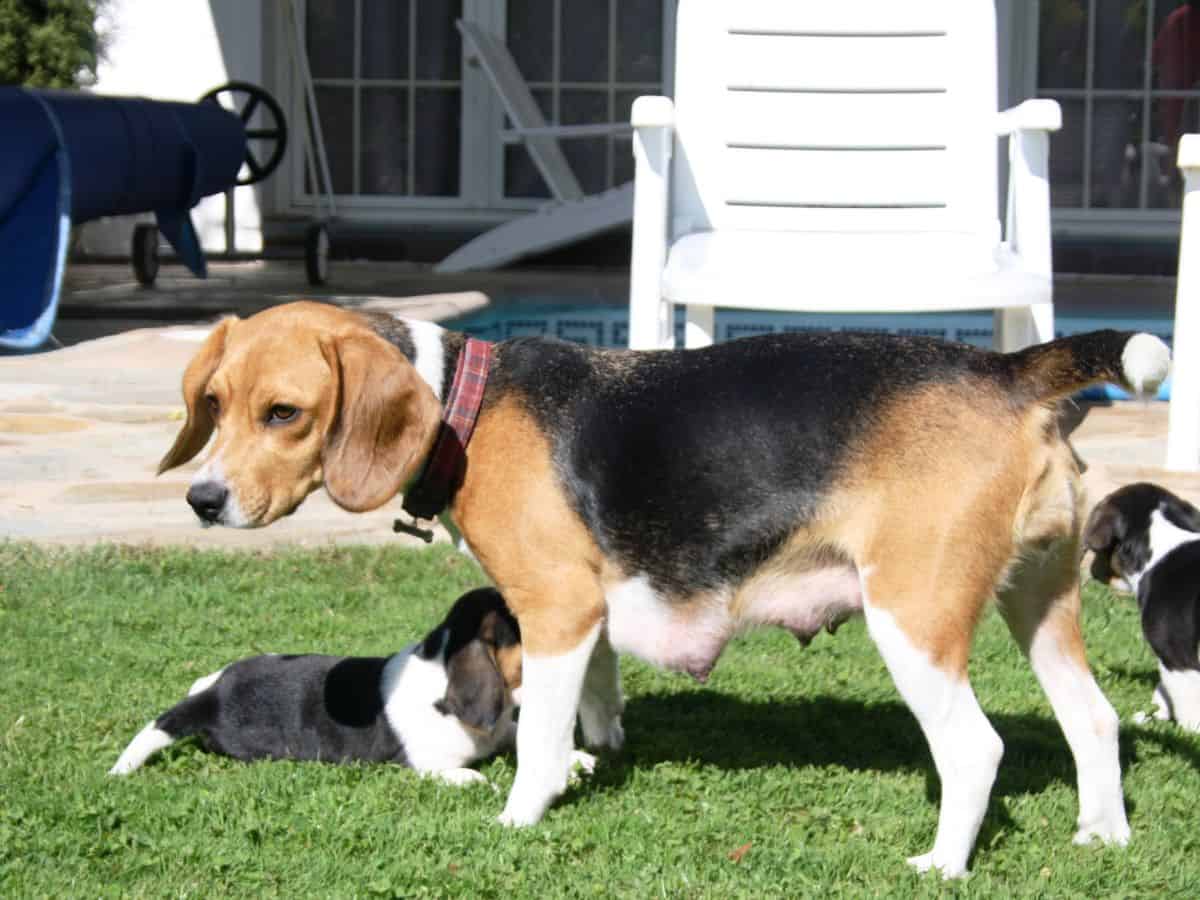
What Are Epsom Salts?
Epsom salts are a naturally occurring mineral compound, formed when magnesium and sulfate come together to form the crystal-like substance magnesium sulfate. In appearance, Epsom salt crystals resemble oversized gains of table salt, but – be warned – this product is not intended for consumption!
Over the last century, Epsom salts have gained increasing popularity as a health-promoting para pharmaceutical substance, perhaps most frequently used as a bathtime addition to relieving muscular aches and pains.
Research suggests that both magnesium and sulfate are readily absorbed through the skin during bathing. Having adequate bodily levels of magnesium is known to help reduce inflammation (in turn assisting muscle and nerve recovery), and sulfate is thought to assist in detoxification processes and ease migraine headaches.
Are Epsom Salts Safe For Dogs?
Yes, unscented Epsom salts are safe for topical (external) use for the vast majority of dogs when used at an appropriate frequency and dilution. You should not allow your dog to consume Epsom salts, or to drink water in which Epsom salts have been dissolved.
For this reason, if you choose to bathe your dog in Epsom salts, you need to ensure constant supervision at all times.
How To Use Epsom Salts To Help Dry Up Dog’s Milk
This process can be started from 7-8 weeks post-whelping, once you are confident that the puppies are weaned.
- Fill a bathtub with warm water. You should be able to submerge your own elbow in the water for 60 seconds without feeling uncomfortably hot.
- Note that the water should be deep enough to reach the underside of your dog’s stomach (covering the mammary gland tissue completely), but not much deeper; a bath that is too deep will increase the risk of bathwater accidentally getting into your dog’s eyes or ears.
- Add the Epsom salts to the water; you should follow the manufacturer’s guidelines (on the packet) to achieve the correct dilution. Generally speaking, this is likely to be about one cup of Epsom salts per gallon of water.
- Mix well and gently lower your dog into the bathtub, or, if they are too large to lift, encourage them to step up into the bathtub using a step or platform next to the bath.
- Allow your pooch to stand in the Epsom bath with mammary tissue submerged for 5-10 minutes. Don’t exceed ten minutes, and keep an eye on the water temperature; you don’t want it to become too cold, as this will be uncomfortable for your pet.
- Empty the bath.
- Rinse your dog’s mammary gland area thoroughly with clean, lukewarm water. The easiest way to do this is using the shower head.
- Note that this step is especially important if your dog is still feeding puppies (even occasionally) because otherwise, the puppies will get an oral dose of Epsom salts the next time they feed, which we do not want.
- Remove your dog from the bathtub, and dry him or her with a towel. If the weather is cold, keep your furbaby indoors until they have completely dried off.
These steps can be repeated every 2-3 days for a maximum of two weeks, by which point the milk should have completely dried up.
Alternatives To Epsom Salts For Drying Up Dog’s Milk
The main alternative to using Epsom salts for this purpose is to give your dog a course of a medication called Galastop (trade name), which contains a drug called cabergoline. You can request this medication from your vet, and it works very well in quickly drying up the milk.
Being a prescription-only medication, Galastop can only be obtained from a veterinarian. It is also important to realize that this medication is fairly expensive, and likely entirely unnecessary as your dog’s milk should dry up naturally without medical intervention.
Epsom salts are probably the best home remedy available for the purpose of helping your dog’s milk dry up, without reaching for a prescription veterinary product.
References
- Moser E., 1992. ‘Feeding to optimize canine reproductive efficiency’. Problems In Veterinary Medicine, 4 (545–550).


